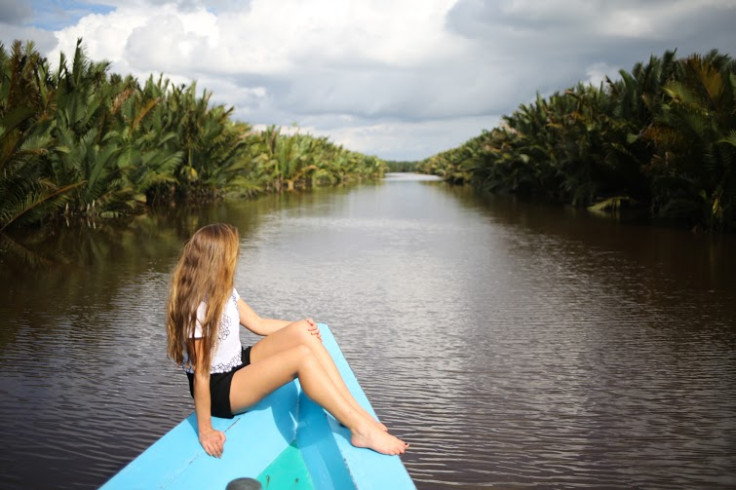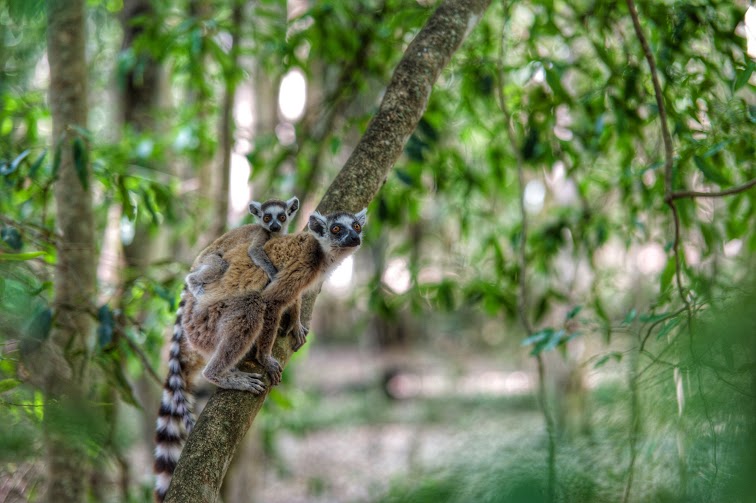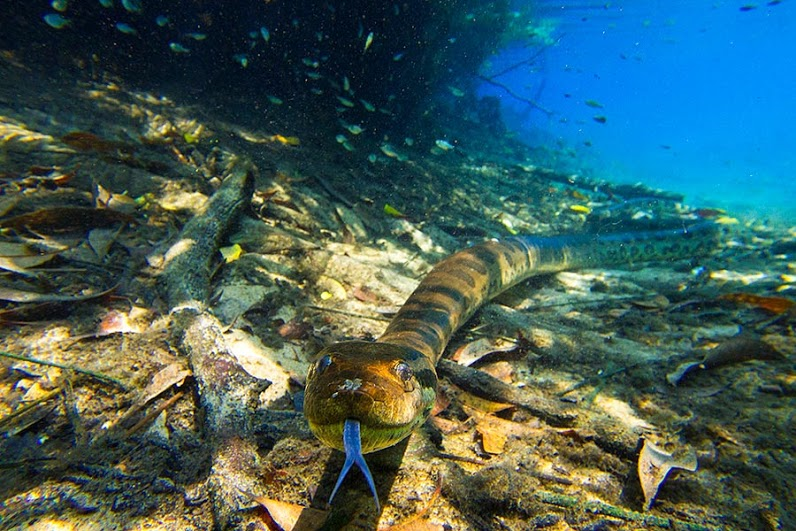World Wildlife Day 2016: Top tips on becoming an eco-tourist in Earth's most beautiful spots
The first challenge when booking a holiday is to decide where to go. Whilst the easiest option is to check into a plush hotel and relax in a tourist friendly place that serves the coffee you like, there is a new push on travellers to use the rich takings of tourism to protect exotic landscapes and endangered wildlife. Instead of looking for the best bars, check out what animals could do with a visitor instead and become a fully fledged eco-tourist.
IBTimes UK spoke to self-professed eco-tourist Catherine Capon about the travel destinations that should be top of our list this year where you will get incredible experiences, awe-inspiring landscapes and wildlife spotting whilst having a positive effect on the planet.

Having travelled the world seeking out new experiences after studying ecology and zoology at Imperial College London, Capon is an certainly an expert on the matter of eco-travel. Ultimately she wants to make wildlife-watching holidays a popular way to make endangered animals worth more alive than dead.
Whilst we can't all just take off the middle of the jungle alone, there are some more accessible great spots to tackle from Borneo to Brazil where you can take the path less trodden and see some incredible creatures. Here is Cat's five eco-tourist hot spots to book now:
Lemurs in Madagascar


· Pros: See lemurs (the most threatened mammal group on earth) in their natural habitat. Madagascar is still home to 107 species of lemur (20% of the world's rare primates).
· Cons: Air Madagascar has a tendency to change internal flight times at the last minute, so always check before you travel.
· Requirements: The accommodation is pretty basic in some of the reserves, so you'll need to be an adventurous traveller who doesn't require luxury.
· Reasons why it is important to visit: Each year 30,000 hectares of forest are being cut down and, if this rate continues, there will be no forest left within 25 years. Eco-tourism is a viable way to make the forests worth more to the local people preserved than destroyed by turning them into agricultural land. If the Malagasy people can make a good living from guiding tourists through the forests and showing off the besotting animals it hosts, they are far more likely to protect them for many more generations. You can also help save the lemurs by donating here.
· An essential item (or two) for each trip: A field guide on the fauna of Madagascar. As many as 85% of the species seen on this island are found nowhere else on earth, so you'll need some help identifying what you're looking at.
· Best months to visit: April-November.
Flights from London to Antananarivo from £625 return, with stops.
Head to Encounter Madagascar for tours and accommodation.
Green Anacondas in Bonito


· Pros: Snorkel in crystal clear rivers with exotic fish, giant otters and maybe even a green anaconda (largest snake species on the planet). Watch macaws and other birds at Buraco das Araras and rappel into the cave of Anhumas Abyss and dive in the lake below
· Cons: The language barrier is a tough obstacle as not many people speak English. Make sure you book an English-speaking guide to get the most out of the adventure.
· Requirements: Travellers should be comfortable snorkelling, have an adventurous spirit and not be scared of snakes!
· Reasons why it is important to visit: Before the 1990s, most of the region was cattle farms where a great deal of the natural vegetation had been cut down for grazing. However, once the rivers, lakes and caves were discovered for tourism potential, many farmers started to open up their land to visitors. Now, these land owners earn far more from tourism than from selling meat and have allowed the natural vegetation to re-establish. Bonito is scattered with Private Reserves of Natural Heritage and these will hopefully increase with the number of responsible eco-tourists.
· An essential item: A Portuguese phrase book.
To get to Bonito, you'll need to fly from São Paulo to Campo Grande (a 2-hour flight). There are many ways to get to Bonito from Campo Grande but car hire is the easiest way to get around.
Flights from London to Sao Paulo in April start at £560 return, with stops
Head to Pousada Olha D'Agua for accomodation.
Gorillas in Uganda







· Pros: See gorillas and chimpanzees in their natural habitat as well as spotting elephants, buffalo, leopards, hippos and the rare tree-climbing lion population in Queen Elizabeth National Park just south of Kibale.
· Cons: Ugandan roads are not smooth sailing so it's best to book a local driver.
· Requirements: Some of the hikes (especially through Bwindi Impenetrable Forest) are challenging, so you'll need to be physically fit.
· Reasons why it is important to visit: Gorilla permits are expensive but that money goes towards conservation activities to protect the remaining 700 individuals. If you can't travel to Uganda right now, you can still help by donating here.
· An essential item: – Gardening gloves (there are lots of thorns in Bwindi).
14 day Gorilla Safari and volunteering trips can be booked through Inspired Escapes from £1329pp.
Flights in June from London to Entibbe start from £375 with stops
Orangutans in Borneo





· Pros: Cruise through Tanjung Puting National Park to see proboscis monkeys, gibbons, and orangutans.
· Cons: There are plenty of mosquitoes, so take repellent.
· Requirements: Travellers will be sleeping on a traditional houseboat, so you'll need to be comfortable with basic accommodation. How often do you get to sleep under the stars though?
· Reasons why it is important to visit: Camp Leakey is an active research facility set up by Dr Biruté Mary Galdikas. She has worked tirelessly to protect wild orangutans and their rainforest habitat, as well as to rehabilitate ex-captive orphan orangutans for life in the wild. By visiting Camp Leakey, you'll be directly benefiting the work of the Orangutan Foundation International and by visiting Borneo as an eco-tourist, you'll be helping to make the land more valuable as forest than as palm oil plantation.
· Best to time to travel: May.
· An essential item: Insect repellent
Flights from London to Palangkaraya (Central Kalimantan) in May start at £960 return.
Accommodation including environmental expeditions with Inspired Escapes start at £1195pp for 10 days.
Grizzly Bears in British Columbia


· Pros: Watch and photograph grizzly, spirit and black bears feeding on salmon.
· Cons: Being a wilderness area, travelling in British Columbia isn't particularly easy or cheap (but absolutely worth it). The lack of roads through the forest means that, from Vancouver, the best way to get around is by air or water.
· Requirements: Early September is the best time to visit the Great Bear Rainforest if you're looking to spot grizzly bears, black bears and spirit bears. Before their long winter hibernation, they're in a state of hyperphagia (constant eating) to gain enough weight to survive the 5-7 months without food. You'll see the bears on the banks of the river or swimming to take advantage of the salmon feast that has arrived in their home.
· Reasons why it is important to visit: Grizzly bears are the slowest reproducing land mammal in North America and because of this, external factors can quickly cause their population to shrink. Therefore, it's almost impossible to comprehend that the government of British Columbia still allows trophy hunting of these majestic creatures. Each spring and autumn, hunters set out with the objective of shooting a big male bear for no other reason than to hang on their wall. Economically trophy hunting doesn't make sense either. A grizzly bear is more valuable alive (for eco-tourists to watch and photograph) than dead. If, like me, you're passionate about stopping trophy hunting, you can donate money to Pacific Wild here.
· An essential item: Warm, waterproof clothing. It is a temperate rainforest after all.
Accommodation and bear viewing tours can be booked from the following:
- Nimmo Bay
- Tweedsmuir Park Lodge
- Great Bear Tours
Flights from London to Vancouver in September start at £394 return
For more information on any of the destinations and more inspiration check out CatherineCapon.com
© Copyright IBTimes 2025. All rights reserved.






















